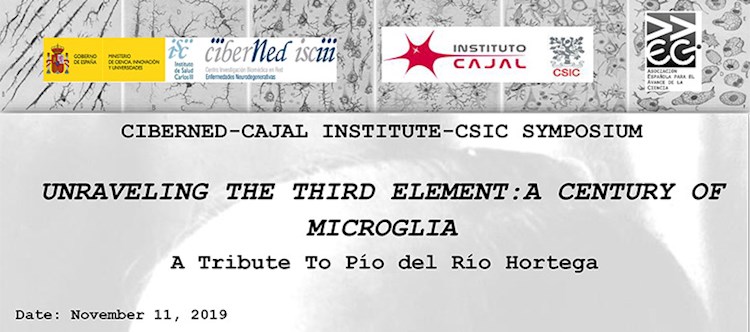
This symposium aims to offer a tribute to Pío del Río-Hortega on the occasion of the 100th anniversary of his seminal work on the first description of the microglia. As one of the most prominent members of the Cajal school, del Río-Hortega published in 1919 a series of papers in Boletín de la Sociedad Española de Biología describing the nature, morphology, origin and function of the apolar cells that Ramón y Cajal had previously called the “third element” of the neural centers as apposed to neurons and astrocytes. At that moment, he introduced for the first time the terms “microglia” and, two years later, “oligodendroglia”. Despite the technical limitations in his time, many of the insightful contributions of Pío del Río-Hortega on the functions of microglia are still valid nowadays. It was not until almost the 70s-80s, and especially in the last decade, that research in microglia actually took off and has now become an extraordinarily active area of research in physiology and a pathology. Thus, since the time of the pioneer work by Pío del Río-Hortega, a large body of evidence has accumulated to clearly establish the critical role that microglia play in maintaining normal brain function since early in development and its activation in response to pathological events and changes in brain homeostasis, acting as the immune-competent cells of the brain.